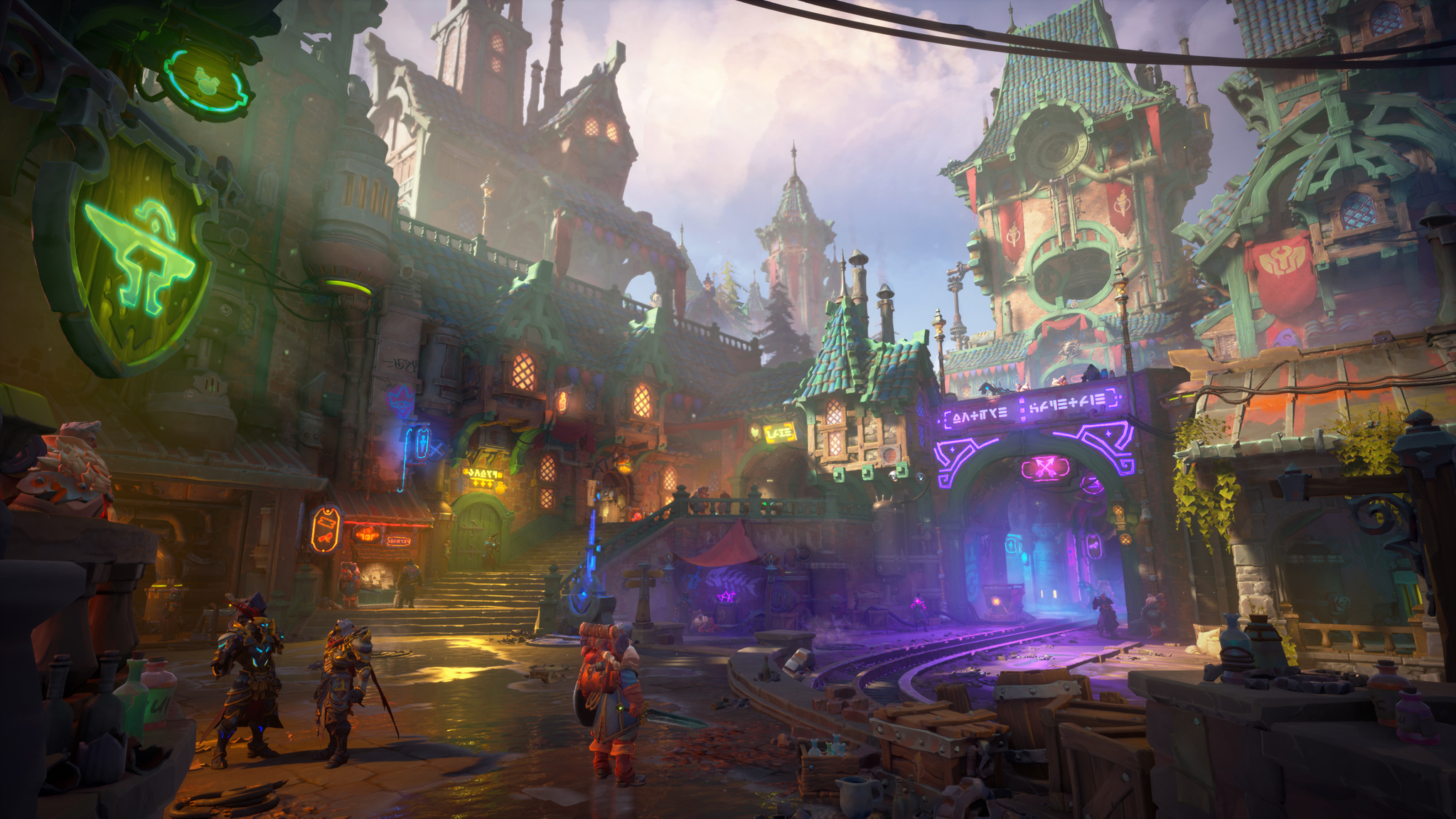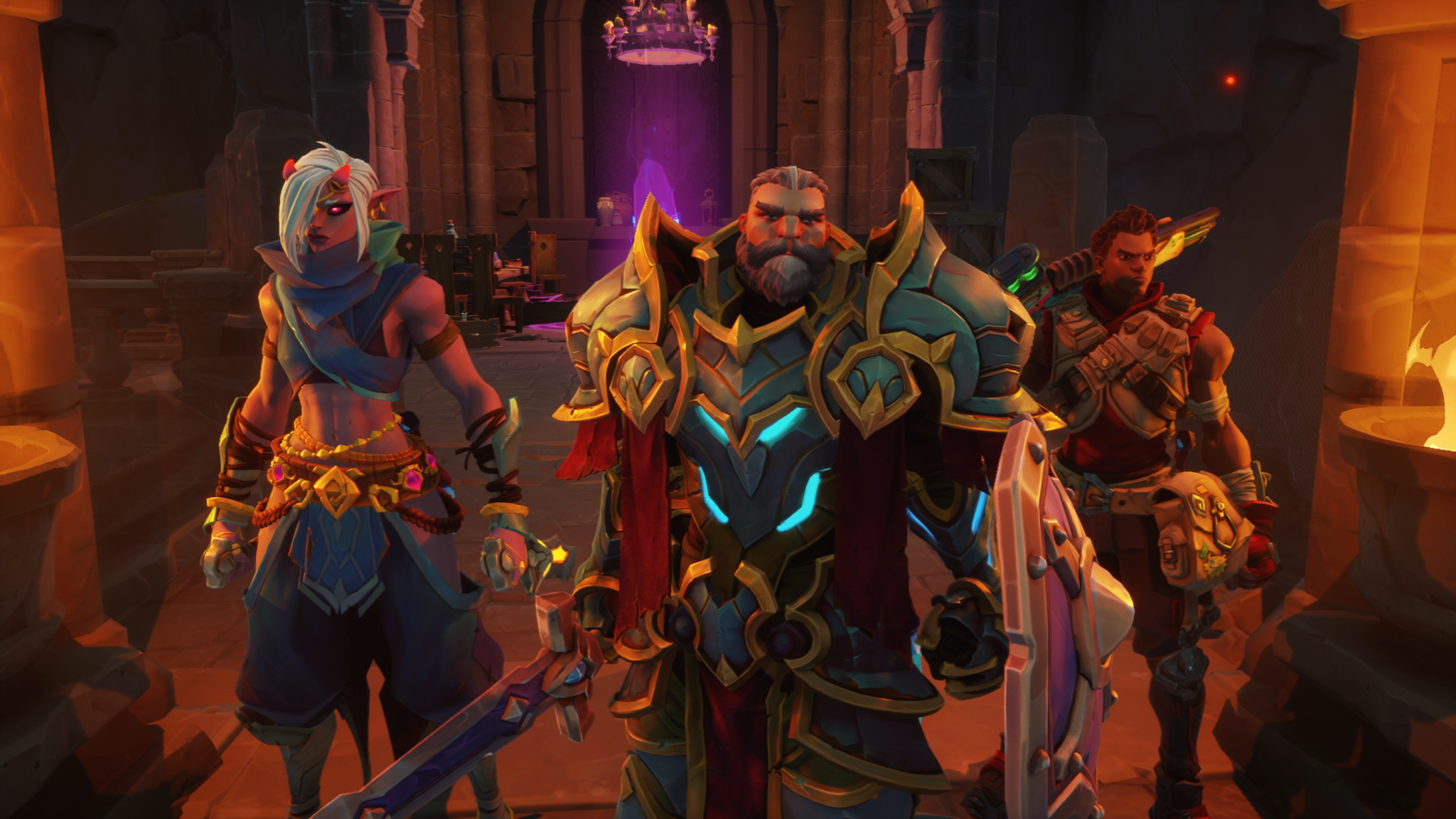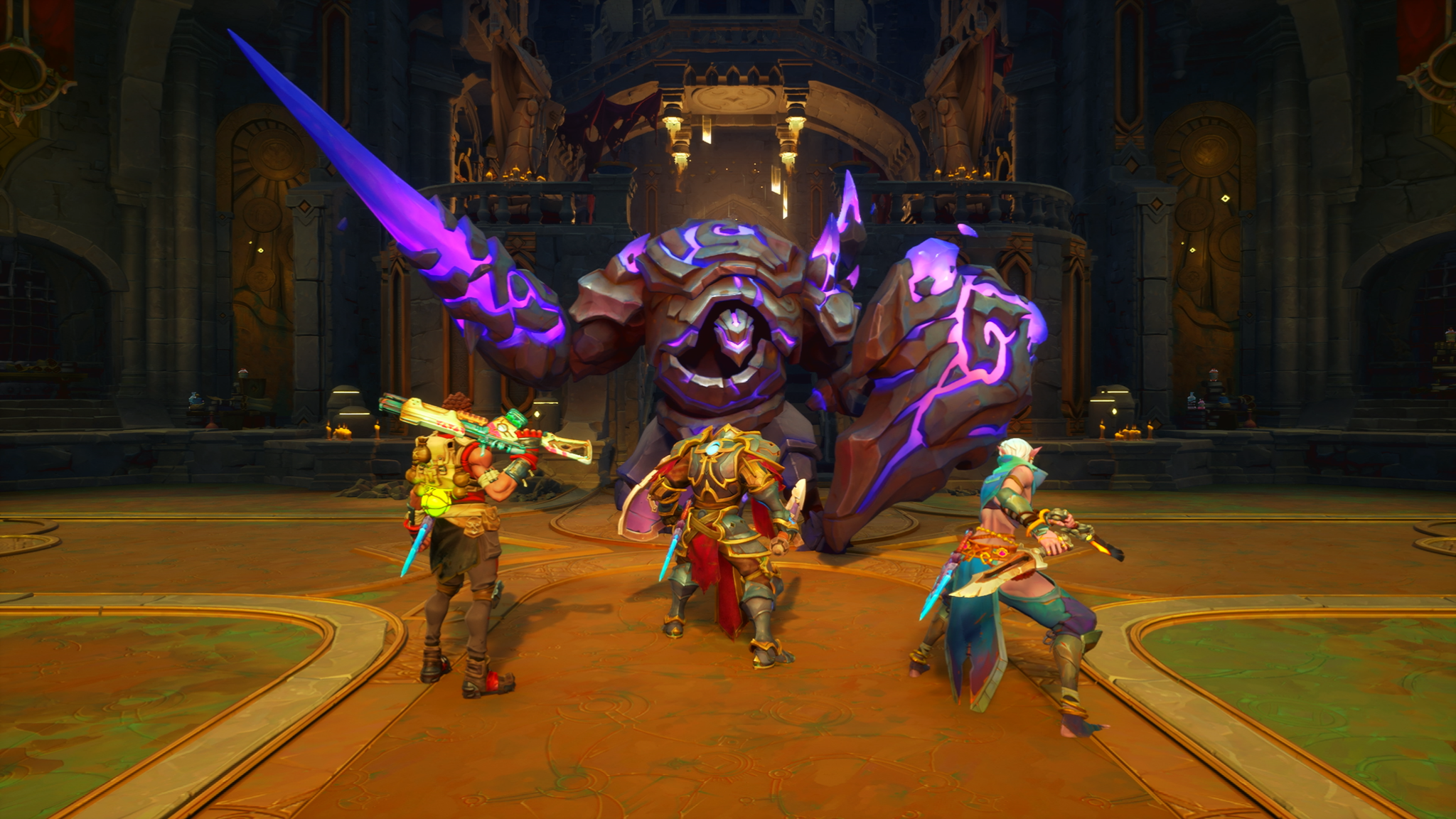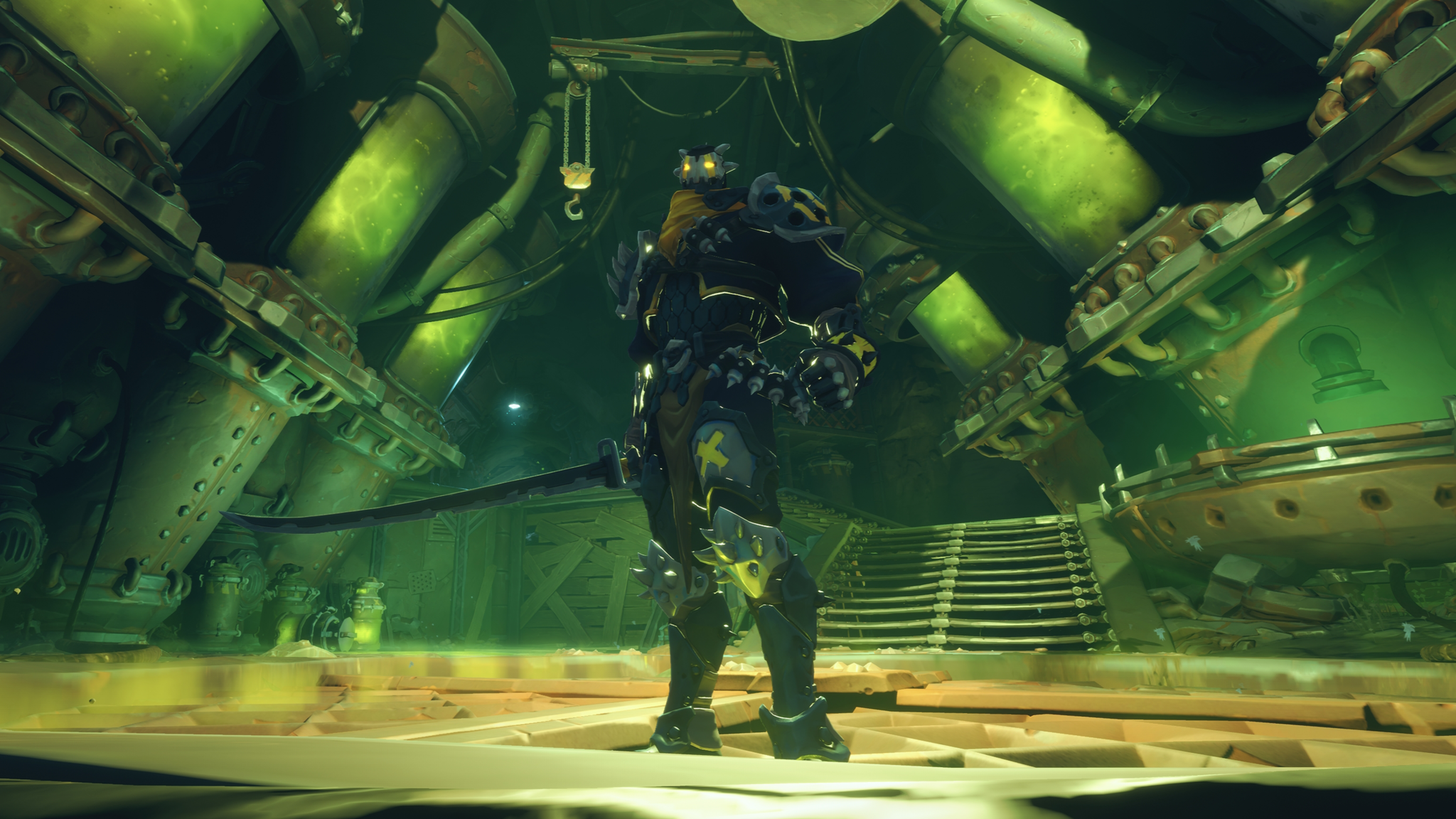Wayfinder Review: A Promising Start with Room for Improvement
Wayfinder is a character-collecting and fast-paced Online Action RPG, has burst onto the scene with a lot of promise during its Early Access phase. Set in a vibrant and colourful world threatened by the encroaching Gloom, players must team up with friends to embark on expeditions, boss battles, and dungeon looting to save the land. However, while the game offers much to be excited about, it currently grapples with technical hiccups and gameplay inconsistencies.
See more: MMORPG Reviews
Challenges in Early Access
Wayfinder’s early access launch has been a mix of excitement and frustration. Server queues and connectivity issues have plagued eager players wanting to dive into the action. The unexpected popularity of the game led to extended waiting times and disconnects, hampering the overall experience. While these problems are typical during early access, it’s clear that more robust stress testing could have alleviated these difficulties.
Visual Aesthetics and Music
The vibrant comic-book art style that defines Wayfinder helps create a visually appealing world design. The expansive landscapes and towns are remarkably beautiful. The characters are large and larger-than-life, with captivating skill animations. The game boasts a distinctly Fortnite-esque appearance; even the in-game menus share similarities. You might mistake the background music for that of The Elder Scrolls Online in certain areas.
Map navigation has always been a significant pain point for me in some MMOs. Unfortunately, Wayfinder falls short in this regard. Although mounts are planned for future updates, you can currently teleport around the map via signal fires. The main issue I’ve encountered is with the map itself—quest icons rarely appear, and instead, you’ll find a yellow dot on your UI. This can be tricky to locate at times, indicating room for improvement in enhancing the ease of finding NPCs or destinations the game directs you to.

Character Customization and Variety
The ability to collect and play as multiple characters, known as Wayfinders, adds depth to the game, though acquiring new Wayfinders might take some time. The range of customizations available for these characters is commendable and bears resemblance to Fortnite. It offers variety, allowing you to distinguish yourself from other players using the same character by changing skins, dyes, as well as adding trinkets and charms.

Gameplay Depth and Combat Mechanics
Wayfinder’s combat system, the central pillar of any action RPG, presents both promising aspects and notable challenges. Initially, the combat might seem basic, with only a set of five abilities. However, this apparent simplicity evolves into a challenge as the game progresses. Overcoming bosses demands precise timing of specific abilities, transforming battles into tests of skill and strategy. Survival hinges on mastering the art of dodging and blocking.
Regarding skills, there’s not a great deal of variety, and customization options are limited, though this expands as you experiment with alternative weapons. The potential for greater diversity in different builds exists, but improvements could be made. In my playthrough, I opted for Wingrave, who seamlessly combines damage, healing, and tanking. Notably, he possesses an unlisted built-in taunt. Given the apparent lack of healers, Wingrave emerges as a strong choice in challenging content, with his ability to output damage, protect the group, and provide group healing.
The flexibility in building variety largely stems from the choices you make and items you collect along the way. Echoes can be added to various parts of your build, offering raw stat increases or additional proc effects, like a damage shield when your health is low. While affinities and masteries seem to offer choices for character and weapon development, their overall impact on variety is limited.
Dungeon Exploration and Progression
Wayfinder’s dungeon exploration shines as a bright spot. Even when revisiting the same dungeon, you encounter different enemies and layouts due to the generated dungeon system. This enhances variety and replayability, ensuring each run feels distinct. Aside from overland maps, the main content consists of expeditions, ranging from 1 to 3 players. Some feel akin to dungeons, while others resemble raid encounters against a single boss. This expedition system features layers where difficulty can be increased, imbuing the expedition with additional effects. Some of these adjustments are necessary for quest completion, but they also yield substantial rewards.
Engaging overland content areas house bosses and mini events, often challenging to complete at lower levels and designed ideally for group play. A notable issue is that these overland areas frequently appear empty. Despite the apparent player queue, actual player density remains low. This scarcity complicates content completion, particularly encounters like the powerful 500k health boss in the Highlands.

Character Progression
The game opens with an extended Main Story Quest section that introduces the mechanics of Wayfinder and establishes the overarching narrative. For a significant portion of my playtime, the experience felt akin to a solo RPG. Even during expeditions, communication is sparse, and players rush through content. The main story proves engaging and enjoyable, buoyed by excellent voice acting and concise dialog. Though occasional linearity is apparent, side quests and objectives eventually emerge, diversifying the experience.
Emphasizing looting and collecting is crucial as you progress. Defeating specific enemies and gathering items is essential for crafting weapons, summoning Wayfinders, crafting expedition enhancements, and advancing your character. Neglecting upgrades can lead to being underpowered for required expeditions in the main story quest. This is vital because, even below the power requirement, you can still join expeditions, potentially hindering your group.
Noticing the character progression takes time, but it became notably more enjoyable for me after levelling my first Wayfinder to level 10 and unlocking all skills. By this point, the game unlocks several menus not initially present, providing ample opportunities for character improvement.
The reward Tower plays a significant role in progression. By participating in various activities, you earn keys to unlock tower items. During early access, the first two seasons of towers are available, offering a range of rewards. However, some items are still unavailable, frustratingly lingering in the “coming soon” section.
Monetization
Early Access requires purchasing a founder pack to play, a contentious issue as some players paid up to £100 to contend with endless queues. Upon full release, the game will transition to free-to-play. Initially, the monetization strategy sparked concern due to store items priced just above the premium currency bundled in founder packs. This forced players to purchase additional currency packages, leading to swift adjustments after player backlash. The primary income source for Wayfinder seems to be the “battle pass” model. With the reward tower upon full release, players gain access to a free, a paid, and a premium tower. The latter two require purchase to obtain and change seasonally, allowing progress beyond the season’s end.
The Future
Wayfinder boasts an ambitious roadmap for future content and updates. It’s promising to see that the developers have extensive plans to enhance the game’s progression, even beyond the server issues. Anticipate skill archetypes and talents to bring more build variety, making each character more engaging. Numerous content types are on the horizon, including events, large group raids, and hard mode hunts, representing proper endgame content. Additional zones, weapons, improved housing, guilds, and more promise an intriguing future for Wayfinder.

Conclusion
In its early access state, Wayfinder presents a mixed experience. The potential for an enthralling cooperative RPG adventure is clear, but server problems and combat limitations hold it back. While character designs and the vibrant world are visually appealing, the gameplay needs refinement to truly shine. With the game’s evolution and responsiveness to player feedback, there’s optimism that Wayfinder will find its footing and offer a more polished and satisfying experience for genre enthusiasts.
Server fixes are underway, so I’ll continue exploring the game’s content and quests. If you’re wondering whether Wayfinder is worth purchasing and playing now, I’d say it’s a decent game. It’s clear that it’s not yet a fully finished product, but it provides a solid foundation for the developers to build upon. In the current MMO landscape, lacking recent major launches, picking up the basic founders pack can offer several hours of engaging content for just £13. Alternatively, you can wait for the full launch to play for free which is expected towards the end of 2023.

